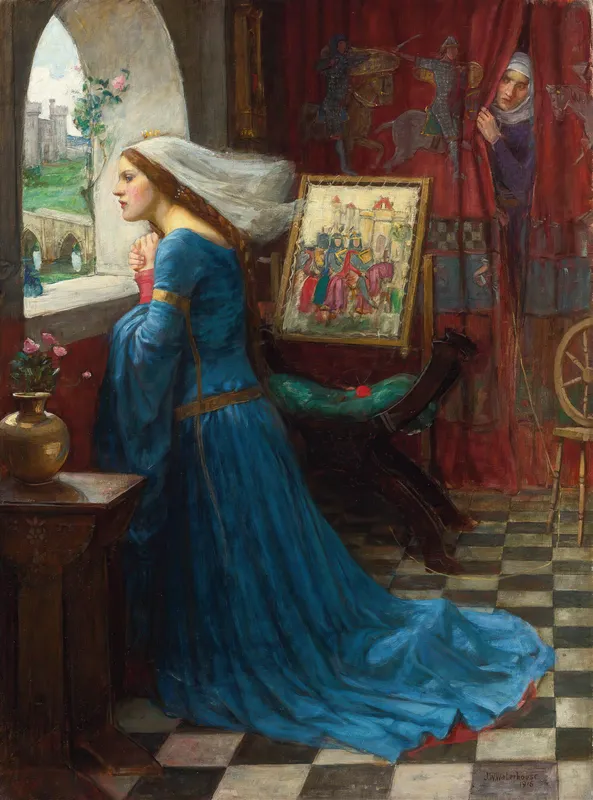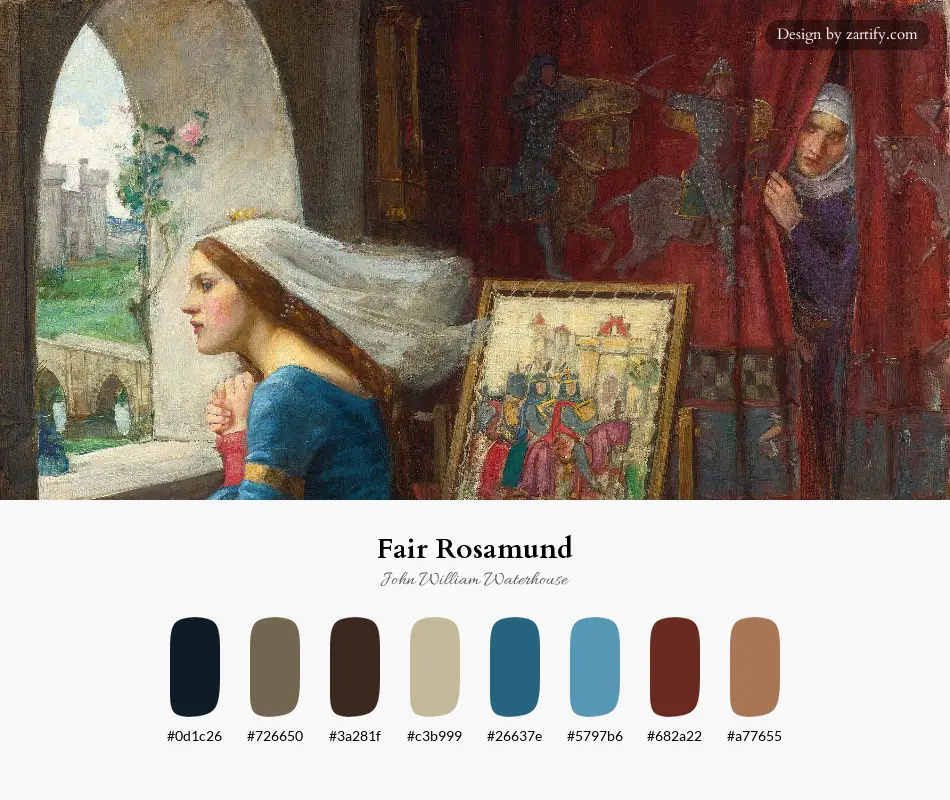




About the Artist
Master’s Palette
Reveal the unique color story behind each piece, helping you delve into the artistic essence, and spark boundless inspiration and imagination.

Bring the captivating colors to your project. Click to copy!
Artwork Story
John William Waterhouse’s Fair Rosamund occupies a curious space within his oeuvre, where medieval legend and Pre-Raphaelite sensibility intersect with unsettling ambiguity. Unlike his more overtly dramatic compositions, this work hinges on a quiet tension—Rosamund Clifford, the legendary mistress of Henry II, is depicted not in the throes of her tragic fate but in a moment of suspended anticipation. The painting’s subdued palette and meticulous rendering of fabric—seriously, the way he paints drapery is almost obsessive—create a claustrophobic intimacy, as if the viewer has stumbled upon a private reverie. Waterhouse avoids literal narrative cues, leaving Rosamund’s expression hovering between resignation and defiance, a choice that amplifies the work’s psychological weight rather than its historical specifics.
Comparisons to other Pre-Raphaelite treatments of doomed women—think Millais’ Ophelia or even Waterhouse’s own The Lady of Shalott—are inevitable, but Fair Rosamund distinguishes itself through its refusal to aestheticize tragedy. There’s no floating hair or watery grave here; instead, the focus is on the quiet erosion of agency. The composition’s tight framing and the figure’s withdrawn posture suggest a mind already rehearsing its own undoing, a theme Waterhouse would revisit with less subtlety in later works. Oddly enough, the painting’s private collection status feels appropriate—it’s a piece that thrives on withheld resolution, resisting the grand gestures of museum spectacle. What lingers isn’t the legend itself but the way Waterhouse makes us complicit in watching a woman brace for the blow she can’t escape.


 (c. 1380-1390)-full.webp)
-full.webp)
-full.webp)
-full.webp)
-full.webp)
-full.webp)